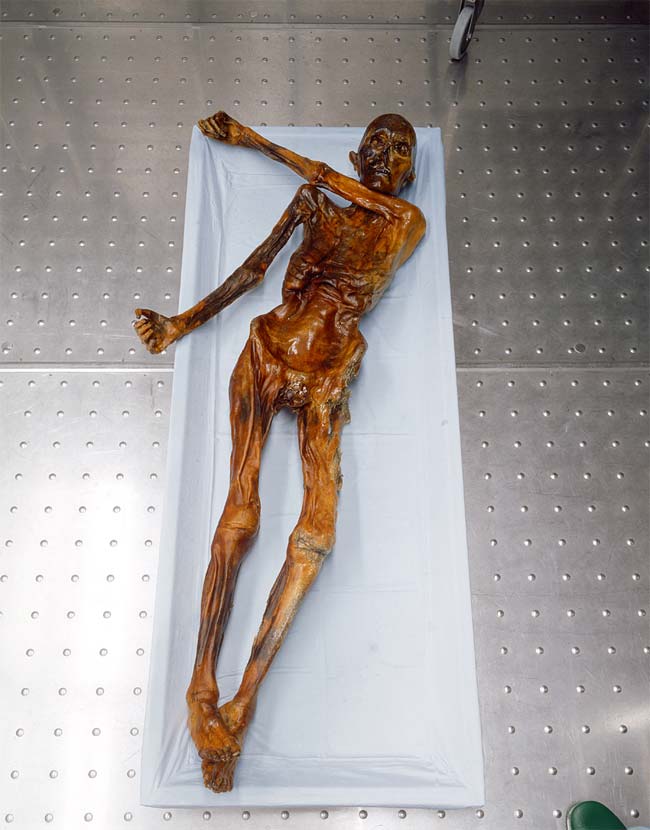Gene Map to Give Insight into 5,200-year-old Iceman

Iceman, the Neolithic mummy found accidentally in the Eastern Alps by German hikers in 1991, has offered researchers all sorts of clues to life 5,200 years ago, from his goat-hide coat to the meat and unleavened bread in his stomach to the arrow wound in his shoulder.
Now, scientists stand poised to find out a whole lot more about Iceman, who also goes by Ötzi, Frozen Fritz and Similaun Man.
They recently finished sequencing the Iceman's genome, which took about three months – a feat made possible by whole genome sequencing technology. With that map of his genes in hand, researchers are moving onto to a whole new array of questions, according to Albert Zink, head of the European Institute for Mummies and the Iceman at the European Academy of Bozen/Bolzano (EURAC) in Italy.
"Some are very simple, like so 'What was really the eye color of the Iceman? What was really his hair color?'" Zink said. There are more complicated questions, too. Zink and others are curious about any genetic evidence of disease in the Iceman and the composition of his immune system.
And there's the big one, he told LiveScience: "Are there any living relatives of the Iceman still around?"
Scientists have already taken a stab at this question when they analyzed DNA from Iceman's mitochondria – energy-producing centers of cells – and compared the results with groups of living individuals. They did not find any matches, suggesting his maternal lineage is either very rare or died out. (Mitochondrial DNA is passed down from mothers to their children and so would only provide relatives on Iceman's mom's side of the family.)
"We have to take into account this is only the maternal lineage," he said, referring to the mitochondrial study. "And not all people are tested."
Get the world’s most fascinating discoveries delivered straight to your inbox.
Until now, scientists hadn't mapped the DNA within the nuclei of his cells. For humans, nuclear DNA contains 6 billion base pairs, while mitochondrial DNA only includes 15,000 to 17,000, according to Zink.
Collaboration with EURAC's Institute for Genetic Medicine is expected to widen the field, because it has collected genetic information on a large number of people living in the region, the most likely prospects for Iceman's descendants. That in addition to the fact that scientists can compare his entire nuclear genome has Zink hopeful of getting to the bottom of some of Iceman's mysteries.
Iceman's genome was sequenced using a sample taken previously from his hip bone, Zink said.
Zink and a colleague from the Institute of Human Genetics at the University of Tübingen were able to complete the genomic sequencing with amazing speed thanks to collaboration with Andreas Keller of the bio-technology firm, febit, according to Zink.
- Top 10 Weird Ways We Deal with the Dead
- History's Most Overlooked Mysteries
- Iceman Mummy Leaves Few Relatives




